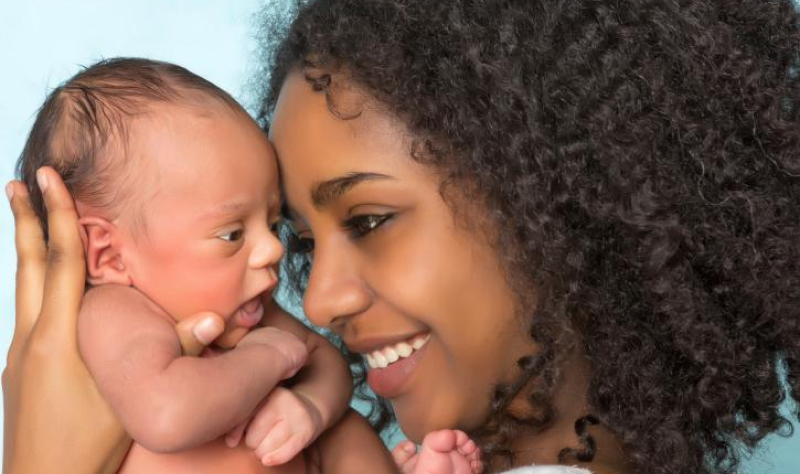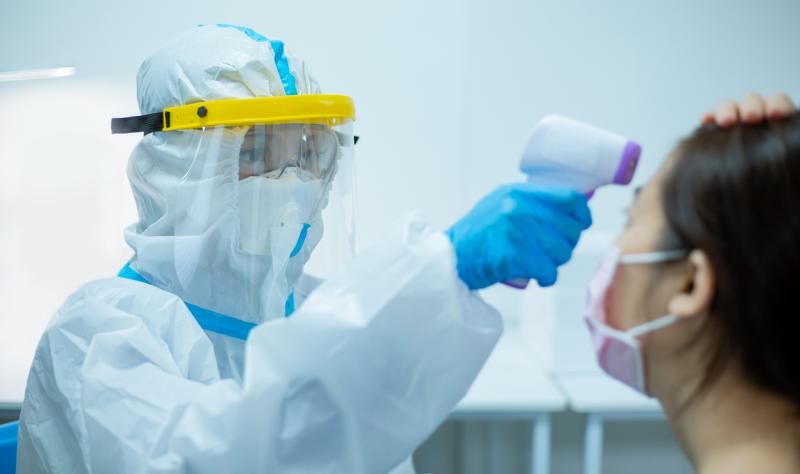COVID in California: U.S. pandemic reprieve over as numbers rise


COVID is very much still out there. U.S. Education Secretary Miguel Cardona tested positive a day after going to the White House Halloween event, while the prosecution’s first witness in the tax fraud trial against the Trump Organization tested positive during lunch break after coughing on the stand in the morning. Orange County has declared a health emergency due to rising viral infections among children, especially RSV and the flu. To be on the safe side, it’s time to get that bivalent booster: Even if a few small studies suggest it may offer no better protection than its predecessor, it’s still better than not being boosted at all.
Santa Clara County health officer warns of “grandchildren of omicron”
Wastewater data shows that COVID-19 transmission levels are higher than official case counts indicate in Santa Clara County, health officials told the board of supervisors Tuesday. “It looks to the casual observer that we’re in pretty good shape because we’re between waves and it’s gone lower,” said Dr. Sara Cody, the county health officer, but added that data from the sewer sheds covering 75% of the population showed substantially higher virus levels in circulation. “We don’t know what’s just around the corner, but we think that the grandchildren of omicron are probably around the corner,” Cody said. “These are the children of BA.5. There’s a few variants that are emerging now. We’ve detected a handful in our county, but they’ve not yet taken off.”
She said that while 16% of eligible residents in the county have received the bivalent booster, compared to about 11% statewide, she would like to see better uptake ahead of the holiday season, especially with flu and RSV circulating. “One of the things that worries me most about how we still have a lot of COVID circulating is, I just worry that the pandemic is going to have a very long tail because there are a lot of people in our community who have long COVID,” Cody said. “Some have mild cases and some are quite severe and they’re not able to work or get back to their regular activities.”
U.S. pandemic honeymoon over as cases and hospitalizations rise
The number of new weekly coronavirus cases in the U.S. rose for the first time since late July last week, from 261,315 to 265,983, according to updated data from the Centers for Disease Control and Prevention. The 7-day daily average for confirmed COVID-19 hospitalizations has also stopped declining, with a small rise from 3,217 to 3,249. The number of weekly deaths climbed to 2,649 from 2,591 in the same period. While the upticks are relatively slight, they come after three months of steadily improving COVID-19 trends nationwide. Federal health officials have long warned of a potential winter surge, especially in light of waning vaccine immunity and the emergence of newer, more evasive omicron subvariants such as BQ.1 and BA.5.2.6. Uptake of the bivalent vaccine booster remains sluggish and 49.3% of the total booster-eligible population has not yet received any booster dose, according to the CDC. The number of people receiving boosters last week rose by just 0.1 percentage point. “If people went out and got their vaccines, we could really get through this without getting into a lot of trouble,” Dr. Ashish Jha, the White House COVID response coordinator, said in an interview last week with CBS News.
Are clip-on oxygen monitors racially biased? Federal regulators meet to discuss
The clip-on devices that use light to measure oxygen levels in the blood are getting a closer look from U.S. regulators after recent studies suggest they don’t work as well for patients of color, the Associated Press reports. The devices, called pulse oximeters, usually snap onto a finger and are widely used in hospitals across the globe to help guide treatment. At-home versions became popular during the COVID-19 pandemic. But several recent studies have raised concerns that the pigmentation in people’s skin can throw off the readings. In 2021, the Food and Drug Administration issued a warning about possible inaccuracies after a study found the devices tended to overestimate Black patients’ oxygen levels. On Tuesday, the agency convened a panel of experts to discuss “ongoing concerns” about the devices, recommendations for patients and doctors, and ways to gauge accuracy. Jeff Shuren, director of the FDA’s Center for Devices and Radiological Health, called racial disparities in these devices “of great public health importance” at the beginning of the meeting. He stressed the need to make sure medical devices are safe and effective for all the groups who use them.
Paxlovid benefits outweigh rebound risk, says FDA commissioner
Paxlovid offers a substantial reduction in death and hospitalization for high-risk COVID-19 patients — benefits that far outweigh the risk of a rebound infection, says Dr. Robert M. Califf, the commissioner of food and drugs at the U.S. Food and Drug Administration. In a Twitter thread on Tuesday, Califf expressed concern that discussions about “Paxlovid rebound” are distracting from the basis for the Emergency Use Authorization granted the Pfizer antiviral. “Rebound or not, Paxloxid was authorized on the basis of a nearly 90% reduction in the risk of hospitalization or death in a clinical trial, in patients at high risk for progression to severe COVID-19; and not on the basis of change in duration of symptoms or viral load reduction,” he said, adding that real-world studies have backed up the benefits observed in the clinical trials. Califf added that more studies need to be done to understand whether reinfections are due to the use of Paxlovid, or an immunological phenomenon. “But the bottom line is: 1) Get up to date on your vaccinations (Covid and Flu) and 2) if you’re high risk and you get infected with Covid, talk with your clinician about antiviral treatment. Unless you have a contraindication, you should probably be treated,” he said. While many infectious disease experts have suggested that Pfizer explore extending the course of treatment from 5 to 10 days to avoid potential reinfections, the drugmaker has not yet provided data on that.
Vaccine hoarding may have cost millions of lives, data show
More than one million lives could have been saved if COVID-19 vaccines had been shared more equitably with low-income countries in 2021, according to a study published last week in Nature. Using mathematical models incorporating data from 152 countries, researchers at the University of Warwick in the U.K. determined that if wealthier countries had not sat on their supply of vaccines and shared them fully, it would have prevented 295.8 million infections and 1.3 million deaths worldwide as a direct result of COVID-19. By the end of 2021, nearly 50% of the global population had been fully vaccinated with two doses, with coverage in some high-income countries closer to 75% but less than 2% in many low-income countries. “Any increased degree of vaccine sharing will at least partially address this balance, potentially generating substantial gains in sparsely vaccinated nations, although inevitably leading to some increase of infection in the most highly vaccinated countries,” the authors wrote, suggesting that if wealthier countries kept non-pharmaceutical interventions — such as mask wearing and social distancing — in place longer they could have offset the shift.
Disney Cruise Line drops vaccine requirement
Disney Cruise Line will no longer require guests boarding its ships to show proof of a negative COVID-19 test, regardless of their vaccination status, starting Nov. 14. The company announced the change in the protocol on its website on Tuesday. Prior to that date, unvaccinated passengers still have to show a negative test taken one to two days in advance of their sailing date before boarding.
All Shanghai Disneyland visitors test negative
Visitors to Shanghai Disneyland who were temporarily blocked from leaving the amusement park on Monday as part of virus testing that extended to more than 400,000 people, have tested negative for COVID-19, according to the city government. The park closed Monday for testing of staff and visitors, Walt Disney Co. and the government said in separate statements. A total of 5,803 people received nucleic acid tests or were put under quarantine after the new infection — affecting a resident of the Pudong New Area — was reported, according to the Shanghai Daily. All the visitors who were locked in the park were allowed to leave by 10:30 p.m. Monday, with an “environmental disinfection” following their departure. Some 439,000 people in Shanghai have undergone PCR testing since the one positive asymptomatic case was detected. All the results have been negative, Shanghai’s official WeChat account Shanghaifabu said on Tuesday.
Orange County declares health emergency due to viruses
A health emergency has been declared in Southern California’s Orange County due to rapidly spreading viral infections that are sending more children to the hospital, health officials said Tuesday. The county health officer issued the declaration Monday due to record numbers of pediatric hospitalizations and daily emergency room visits, the county’s health care agency said in a press release, according to the Associated Press. The move allows the county of 3 million people to access state and federal resources and enlist assistance from non-pediatric hospitals to help care for sick children, said Dr. Regina Chinsio-Kwong, the county’s health officer. “Our concern here is that it is reaching even record levels,” Chinsio-Kwong told reporters. “We want to make sure we are prepared to care for any sick child in the county who falls ill and requires hospital care.” The county has seen a growing number of children with respiratory syncytial virus (RSV), while flu cases are also starting to rise. The situation is similar in much of the country where doctors are bracing for the possibility that RSV, flu and COVID-19 could combine to stress hospitals.
Education Secretary Cardona tests positive
Education Secretary Miguel Cardona, who has been vaccinated and boosted against the virus, tested positive Tuesday and has mild symptoms, the Education Department said in a statement. He tested positive the morning after he attended Halloween festivities at the White House, the Associated Press reports. President Biden and his wife, Jill, hosted a trick-or-treat event at the White House on Monday, but the Education Department said they are not close contacts of Cardona, as defined by the Centers for Disease Control and Prevention. Cardona, 47, separately welcomed elementary school trick-or-treaters to the Education Department on Monday and later spoke at the Association of Art Museum Directors’ annual meeting.
Heart inflammation risk remains low after third vaccine dose, study finds
A third dose of the Moderna or Pfizer COVID-19 vaccine does not increase the risk of heart inflammation more than a second dose, according to a preprint study being presented Saturday at the American Heart Association’s Scientific Sessions. Cases of acute myocarditis were rare according to the study, which collected data from millions of patients in Southern California between Dec. 2020 to Feb. 2022. Among the 2.9 million people in the study who received a second dose of an mRNA vaccine, 26 developed myocarditis that required hospitalization. Among the 1.4 million who received the third dose, nine were hospitalized for myocarditis. The majority of cases happened within seven days of vaccination, most were mild, and the symptoms resolved without extensive intervention. “It is an important question because with additional doses of COVID-19 mRNA vaccines being recommended, it is essential to monitor its safety,” said Dr. Mingsum Lee, the study’s senior researcher and a cardiologist at Kaiser Permanente Los Angeles Medical Center, in a statement. Other studies have shown the risk of myocarditis is much higher after COVID-19 infection than after vaccination.
New money available to understand COVID among animals
Researchers exploring COVID-19 in animals have until Jan. 15 — or until Jan. 31 for Tribal researchers — to apply for grants from a new $30 million pool the U.S. Department of Agriculture is making available to “build an early warning system” to help stop the next coronavirus outbreak in non-human creatures. Goals include learning to detect new variants more quickly, determining which animals are more or less susceptible and better understanding and preventing COVID transmission in animals. The funding sets aside $5 million specifically for Tribes or those working on their behalf, and $25 million for all researchers, including those from Tribes.
Study highlights virus’ impact on brain: “A silent killer”
COVID-19 has been shown to trigger inflammation in the brain, activating a similar response as Parkinson’s disease, according to a study published Tuesday in Nature’s Molecular Psychiatry. A research team at the University of Queensland in Australia identified a potential future risk for neurodegenerative conditions in people who have had COVID-19 — and also a possible treatment. “We studied the effect of the virus on the brain’s immune cells, ‘microglia’ which are the key cells involved in the progression of brain diseases like Parkinson’s and Alzheimer’s,” lead author Trent Woodruff said in a statement. “We found the cells effectively became ‘angry’, activating the same pathway that Parkinson’s and Alzheimer’s proteins can activate in disease, the inflammasomes.”
Dr. Eduardo Albornoz Balmaceda of the university’s School of Biomedical Sciences said the research shows a spike protein of the virus triggers a “fire” in the brain, which begins a chronic and sustained process of killing off neurons. “It’s kind of a silent killer because you don’t see any outward symptoms for many years,” he said. “It may explain why some people who’ve had COVID-19 are more vulnerable to developing neurological symptoms similar to Parkinson’s disease.”
But the researchers may have also discovered a potential treatment in inhibitory drugs which are currently in clinical trials with Parkinson’s patients. “We found it successfully blocked the inflammatory pathway activated by COVID-19, essentially putting out the fire,” Balmaceda said. “The drug reduced inflammation in both COVID-19-infected mice and the microglia cells from humans, suggesting a possible treatment approach to prevent neurodegeneration in the future.”
UCSF’s Wachter weighs indoor dining risks while traveling
Dr. Bob Wachter, chair of UCSF’s Department of Medicine, has become known on Twitter for using his comfort level for eating indoors as an indicator of COVID-19 pandemic trends. In September, he declared that he was ready to ditch his mask and dine inside again in his hometown of San Francisco, using the threshold of daily COVID cases falling below 5 for every 100,000 residents in the region. But on Tuesday, Wachter clarified it’s not a one-size-fits-all approach. When he travels to New York City on Friday, he said he would avoid indoor crowded settings there because the daily case rate is 29 per 100,000. “The same encounter there is 4x riskier Covid-wise than here,” Wachter tweeted.
Asked by one of his followers if he trusted the New York Times data he cited since so few people report their test results to public health agencies, Wachter said, “Bottom line is that the raw reported case numbers are significant underestimates (by 5-10-fold) but the trends can be trusted since they correlate quite well with other numbers that are not subject to reporting bias.” Another follower asked him about his seemingly shifting threshold, since the data show San Franciso reporting 7 cases per 100,000. “No bright line,” Wachter said. “If it’s <5, I wouldn’t hesitate to eat indoors. At 5-10 (ie, SF now), I’ll do it if it’s best/only option, but prefer outdoors. Over ~10-15, risk is higher than I’d like, since that # correlates w/ >2% chance that any asymptomatic person has Covid & is infectious.”



